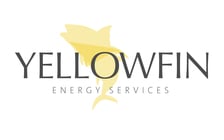
Get matched with top biohazard remediation specialists in Larose, LA
There are 0 highly-rated local biohazard remediation specialists.
Matching on Angi


TRUSTED BY HOMEOWNERS
 4.5
4.5  11
11 Biohazard remediation specialists in Larose

We are a full service floor maintenance company. All of our technicians are fully trained to tackle even to toughest problems.
"Joe Nata is friendly, responsive, efficient and does a great job. His prices are reasonable too. I will definitely use him again."
Ragan G on November 2020
We are a full service floor maintenance company. All of our technicians are fully trained to tackle even to toughest problems.
"Joe Nata is friendly, responsive, efficient and does a great job. His prices are reasonable too. I will definitely use him again."
Ragan G on November 2020
When you have mold, making the correct decisions right away is critical. Whether it?s mold in your home, school, place of work or apartment there are many factors to consider. Will you be seeking property damages? Is anyone sick from mold exposure? Do you just want to test to be sure your environment is safe? Do you need Post Mold Remediation Testing to ensure a good job was done? These and other factors are questions which need to be answered before any environmental testing starts. It?s important to know what your goals are and why your testing. Different goals require different environmental tests, i.e. medical damages & property damages require different environmental tests to prove your case in court. Tests that a common or inexperienced mold inspector would not typically use or know to use.
When you have mold, making the correct decisions right away is critical. Whether it?s mold in your home, school, place of work or apartment there are many factors to consider. Will you be seeking property damages? Is anyone sick from mold exposure? Do you just want to test to be sure your environment is safe? Do you need Post Mold Remediation Testing to ensure a good job was done? These and other factors are questions which need to be answered before any environmental testing starts. It?s important to know what your goals are and why your testing. Different goals require different environmental tests, i.e. medical damages & property damages require different environmental tests to prove your case in court. Tests that a common or inexperienced mold inspector would not typically use or know to use.
At Mold Remediation & Testing Experts, our mission is to PROVIDE A HIGH-QUALITY INDOOR AIR ENVIRONMENT, free of molds, toxins and volatile compounds. Our highly trained technicians are certified to use TWO BREAKTHROUGH TECHNOLOGIES that simply make other mold remediation methods obsolete. Our GREEN TREATMENT SYSTEM is a NON-DESTRUCTIVE TECHNIQUE that utilizes an all natural, plant-based enzyme that attaches itself to the mold molecule and renders it completely inert. This process is 100% effective and completely safe for people, plants, pets and belongings! We know that in the world of mold, one size does not fit all. For this reason, we also offer our INDUSTRIAL SANITIZING SYSTEM that requires the skill and care that only our professional technicians can deliver. We strive to RESTORE A HEALTHY ENVIRONMENT to your family. Call us today for a FREE MOLD CONSULTATION , or have A technician come out, to your home or business, for an EXPERT MOLD INSPECTION. Ask about our ONE-YEAR GUARANTEE
"Fast, professional, reasonable, Made me feel MUCH better about the safety of my home."
Elyce P on April 2025
At Mold Remediation & Testing Experts, our mission is to PROVIDE A HIGH-QUALITY INDOOR AIR ENVIRONMENT, free of molds, toxins and volatile compounds. Our highly trained technicians are certified to use TWO BREAKTHROUGH TECHNOLOGIES that simply make other mold remediation methods obsolete. Our GREEN TREATMENT SYSTEM is a NON-DESTRUCTIVE TECHNIQUE that utilizes an all natural, plant-based enzyme that attaches itself to the mold molecule and renders it completely inert. This process is 100% effective and completely safe for people, plants, pets and belongings! We know that in the world of mold, one size does not fit all. For this reason, we also offer our INDUSTRIAL SANITIZING SYSTEM that requires the skill and care that only our professional technicians can deliver. We strive to RESTORE A HEALTHY ENVIRONMENT to your family. Call us today for a FREE MOLD CONSULTATION , or have A technician come out, to your home or business, for an EXPERT MOLD INSPECTION. Ask about our ONE-YEAR GUARANTEE
"Fast, professional, reasonable, Made me feel MUCH better about the safety of my home."
Elyce P on April 2025

Thorough home inspections using the latest technology, continued education, and strict adherence to the standards of practice put forth by the State of Louisiana. Tankless water heater maintenance. Providing clients peace of mind and confidence, weather purchasing or selling a property.100% Satisfaction guaranteed. Licensed and insured. Owner operated.
"he did a great job"
Trisha P on April 2025
Thorough home inspections using the latest technology, continued education, and strict adherence to the standards of practice put forth by the State of Louisiana. Tankless water heater maintenance. Providing clients peace of mind and confidence, weather purchasing or selling a property.100% Satisfaction guaranteed. Licensed and insured. Owner operated.
"he did a great job"
Trisha P on April 2025
Global Plasma Solutions is a manufacturing company that sells air purification systems primarily into the commercial and residential markets. Home owners can benenfit from our systems as they are easily adapted to any HVAC system. Go to www.gpshvac.com to find a certified contractor near you to have one installed within your home.
Global Plasma Solutions is a manufacturing company that sells air purification systems primarily into the commercial and residential markets. Home owners can benenfit from our systems as they are easily adapted to any HVAC system. Go to www.gpshvac.com to find a certified contractor near you to have one installed within your home.
PLUG N DIKE CAN HELP TO CONTROL AND CONTAIN LARGER SPILLS.
PLUG N DIKE CAN HELP TO CONTROL AND CONTAIN LARGER SPILLS.
Biohazard remediation services FAQs
There are several instances where household biohazard cleanup would be needed. All in all, anytime an event can potentially expose people to chemicals, pathogens, or viruses, a biohazard cleanup company must be called. These events can include:
Sewage backup
Unattended death or crime scene after death
Virus decontamination
Medical waste disposal
Animal waste disposal
Odor control
Hazardous chemical removal
The cost of biohazard cleanup averages between $3,000 and $5,000 for most homeowners. Some services, like sanitizing high-traffic areas or sanitizing surfaces from a virus, cost closer to $1,500. However, other circumstances, like the extensive cleanup after a major sewer backup, could cost as much as $25,000.
While a biohazard cleanup sounds like a scary process, knowing what to expect can help ease your concerns and set you up for success. It’s good to note that more than one professional might be needed depending on your situation, but that will be determined during the assessment. What you can expect during a home biohazard cleanup is the following:
Assessment: The first step in this process is for a biohazard cleanup professional to assess the damage. They create a report that includes the biohazard safety level, the needed damage cleanup, and the time it should take to complete the project.
Setup: The cleanup professional prepares the site to prevent cross-contamination and reduce toxicity risk. This process can include tarping and creating decontamination zones.
Removal of surface contamination: Any contaminated materials are removed from the area, starting with large materials followed by small ones. The professional can assess any floor-related damage once everything is removed from the site.
Salvaging items: The biohazard cleanup professionals assess which items can be saved and which are contaminated beyond the point of saving. Those deemed unsafe will be disposed of immediately.
Waste disposal: The next step is carefully disposing of the hazardous waste. Your professional will place the contaminated items in specific containers to keep the contamination from spreading.
Disinfection: The house will be disinfected and odor-neutralized. Even more minor details, like light switches and bulbs, will be disinfected so that they do not recontaminate the area in the future.
Restoration: Once the decontamination is complete, the last step is to restore the home. This includes repairing the damage to flooring, walls, or even the home's foundation.
Most homeowner’s insurance policies can help cover the cost of biohazard cleanings for specific events. Biohazard events like unattended death, infectious disease, and medical emergency are generally covered, as are flooring and drywall repairs. It’s best to check with your insurance company to see what is specifically covered.
One of the best ways to prepare for a home biohazard cleanup is not to touch anything. Do not remove belongings, even if they are of value or importance, from the area as they are likely contaminated. It’s essential not to use any cleaning products of your own, as the cleaning company will be using chemicals that could interact with your products.
One thing you can do to prepare is take pictures of your space and belongings that need to be cleaned, especially if you plan on filing a claim with your insurance company. In addition, take time to make a list of items that are valuable, sentimental, or otherwise important. The cleanup company must evaluate these belongings to make sure they are safe.













